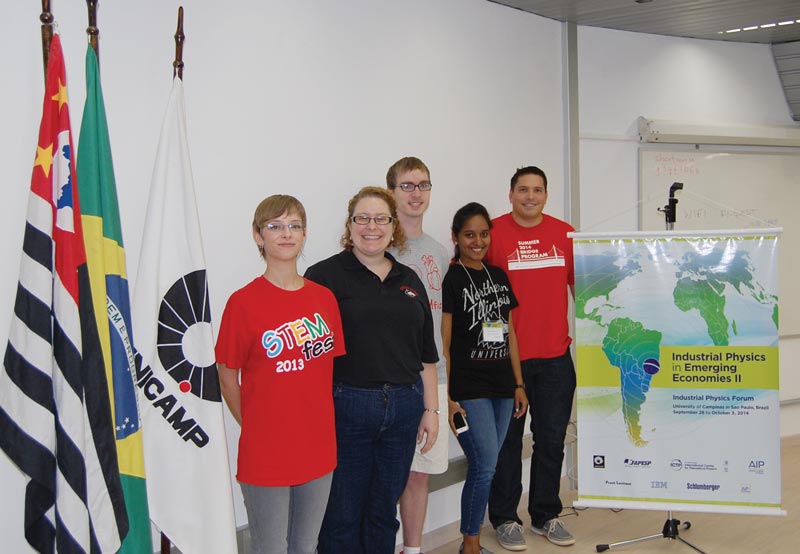Industrial-Sized Physics
AIP Industrial Physics Forum
September 28, 2014 to October 3, 2014
Sao Paulo, Brazil
Meeting host: By:Jamison Thorne
SPS Chapter:

At college I had heard about “industrial physics.” I knew it to be a lucrative career path for physicists, but it wasn’t until I attended the American Institute of Physics’ Industrial Physics Forum in Brazil that I really had the opportunity to explore how physics and industry can work together to improve processes and promote new business ventures. During a field trip for participants, for instance, I saw firsthand how a company can use science for the benefit of the population at large as well as itself. I visited Embrapa’s satellite monitoring facility and learned how agriculture is monitored regionally across Brazil to find the best locations for crops and grazing spots for animals.
The topics covered in talks at the forum ran the gamut: trends in industrial physics, physics and diplomacy, entrepreneurial professors, physics in oil fields, and global industrial physics. I found two presentations on tools that utilize fundamental concepts in physics to be especially captivating.
Simarjeet Saini from the University of Waterloo in Canada is developing low-cost diffraction gratings that can turn smartphones into spectrometers. With this tool, food products can be analyzed to determine if toxins are present. Saini aims to provide inexpensive contaminant sensors to populations with high levels of contamination in their food sources, such as India.
Jarbas Neto from São Carlos Institute of Physics at the University of São Paulo in Brazil talked about a virus called citrus greening disease that has wiped out a large percentage of orange trees globally. He is working on a handheld spectrometer that analyzes the leaves of orange trees and makes a diagnosis by detecting a certain wavelength of light associated with infected trees. The spectrometer can detect infection up to a year and a half before a tree shows other signs of disease, and could thus save trees, resulting in more food and reduced costs.
Following a few days of presentations, there was a two-day short course on science and technology entrepreneurship that inspired me to want to found a startup in the future. It covered issues related to patents, government regulations, trading internationally, and funding. With a good idea and a working knowledge of policy and funding, starting a company definitely seems doable.
Through my interactions with other participants, I realized that even if you make decisions early about the career path you want to follow, you can change your mind later. You may even find yourself on a completely new path someday. A number of the people I met were doing really interesting things that they had never considered while they were an undergraduate or graduate student. Industry offers many viable career paths for physics majors.
Be an SPS Reporter!
SPS offers travel support at a level of $200 for SPS members who report on a national physics meeting for SPS.
For details, visit www.spsnational.org/programs/awards/reporter.htm.
Next up
The next Industrial Physics Forum, Mesoscale Science and Technology of Materials and Metamaterials, will take place October 19-20, 2015, at the AVS 62nd International Symposium and Exhibition in San Jose, CA. For details, watch www.aip.org/industry/ipf.
